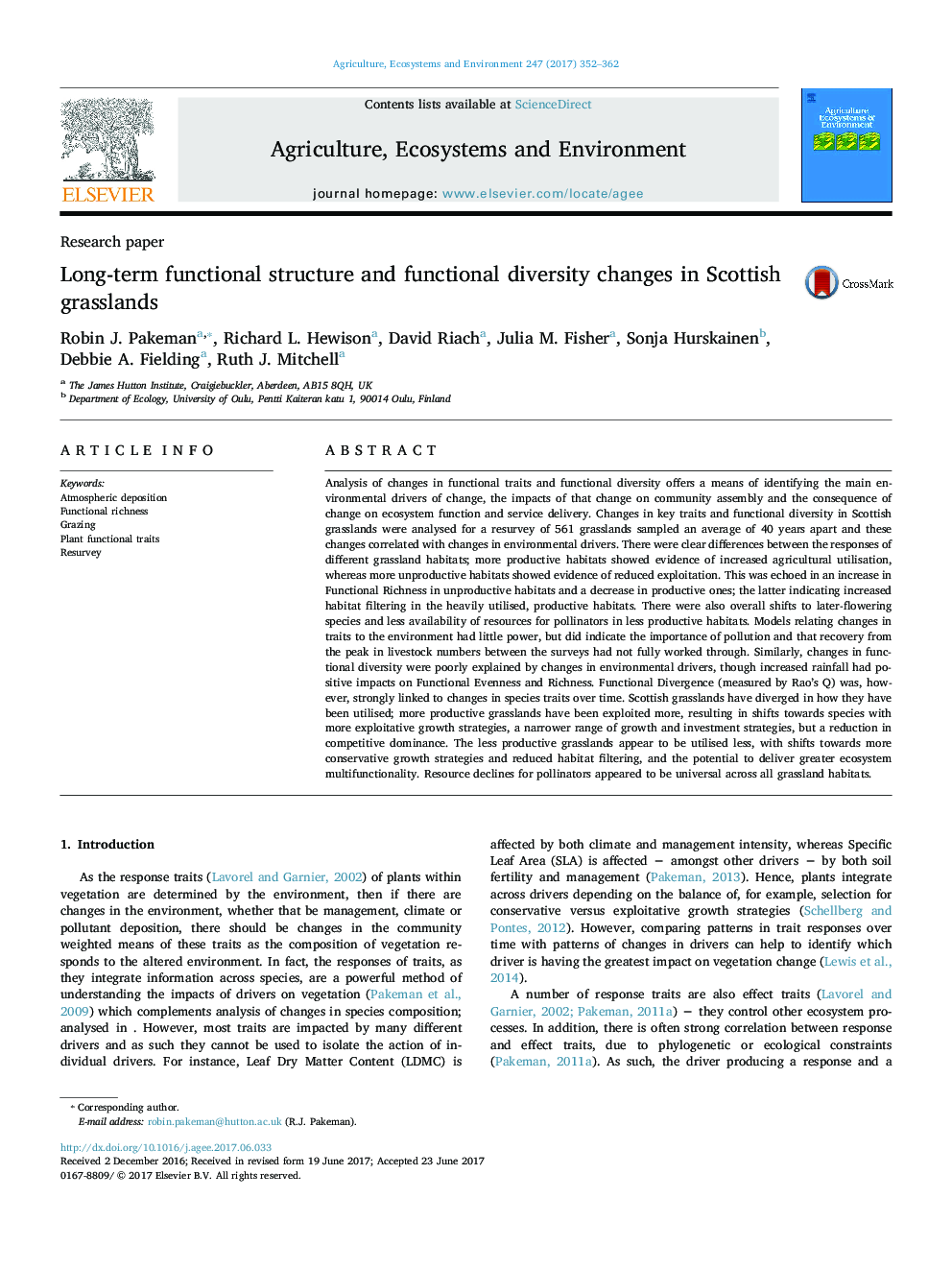| کد مقاله | کد نشریه | سال انتشار | مقاله انگلیسی | نسخه تمام متن |
|---|---|---|---|---|
| 5538010 | 1552005 | 2017 | 11 صفحه PDF | دانلود رایگان |
عنوان انگلیسی مقاله ISI
Long-term functional structure and functional diversity changes in Scottish grasslands
ترجمه فارسی عنوان
ساختار عملکرد بلند مدت و تنوع عملکردی در مراتع اسکاتلند
دانلود مقاله + سفارش ترجمه
دانلود مقاله ISI انگلیسی
رایگان برای ایرانیان
کلمات کلیدی
موضوعات مرتبط
علوم زیستی و بیوفناوری
علوم کشاورزی و بیولوژیک
علوم زراعت و اصلاح نباتات
چکیده انگلیسی
Analysis of changes in functional traits and functional diversity offers a means of identifying the main environmental drivers of change, the impacts of that change on community assembly and the consequence of change on ecosystem function and service delivery. Changes in key traits and functional diversity in Scottish grasslands were analysed for a resurvey of 561 grasslands sampled an average of 40 years apart and these changes correlated with changes in environmental drivers. There were clear differences between the responses of different grassland habitats; more productive habitats showed evidence of increased agricultural utilisation, whereas more unproductive habitats showed evidence of reduced exploitation. This was echoed in an increase in Functional Richness in unproductive habitats and a decrease in productive ones; the latter indicating increased habitat filtering in the heavily utilised, productive habitats. There were also overall shifts to later-flowering species and less availability of resources for pollinators in less productive habitats. Models relating changes in traits to the environment had little power, but did indicate the importance of pollution and that recovery from the peak in livestock numbers between the surveys had not fully worked through. Similarly, changes in functional diversity were poorly explained by changes in environmental drivers, though increased rainfall had positive impacts on Functional Evenness and Richness. Functional Divergence (measured by Rao's Q) was, however, strongly linked to changes in species traits over time. Scottish grasslands have diverged in how they have been utilised; more productive grasslands have been exploited more, resulting in shifts towards species with more exploitative growth strategies, a narrower range of growth and investment strategies, but a reduction in competitive dominance. The less productive grasslands appear to be utilised less, with shifts towards more conservative growth strategies and reduced habitat filtering, and the potential to deliver greater ecosystem multifunctionality. Resource declines for pollinators appeared to be universal across all grassland habitats.
ناشر
Database: Elsevier - ScienceDirect (ساینس دایرکت)
Journal: Agriculture, Ecosystems & Environment - Volume 247, 1 September 2017, Pages 352-362
Journal: Agriculture, Ecosystems & Environment - Volume 247, 1 September 2017, Pages 352-362
نویسندگان
Robin J. Pakeman, Richard L. Hewison, David Riach, Julia M. Fisher, Sonja Hurskainen, Debbie A. Fielding, Ruth J. Mitchell,
